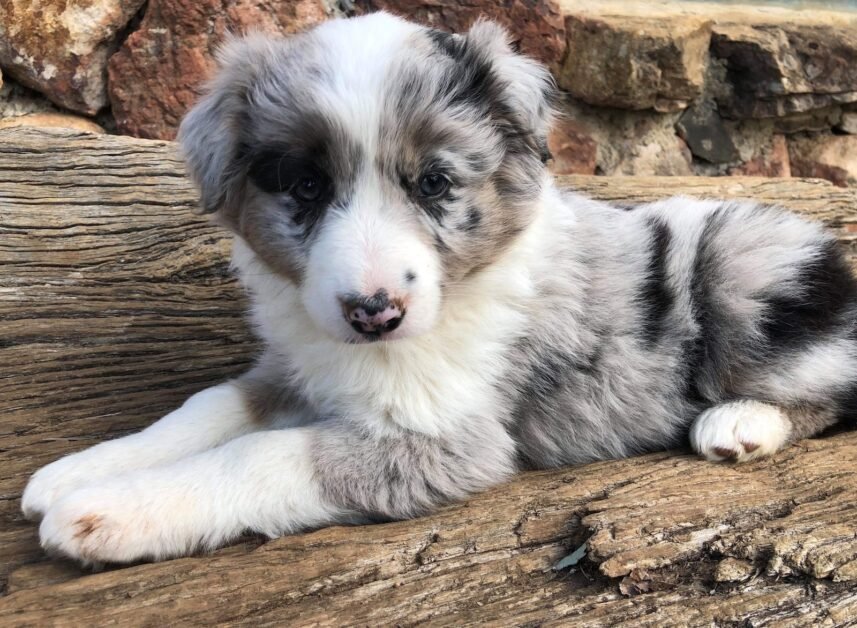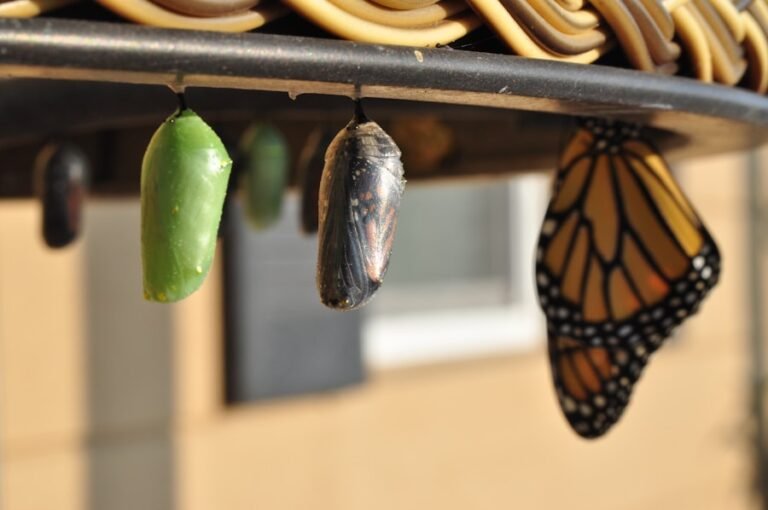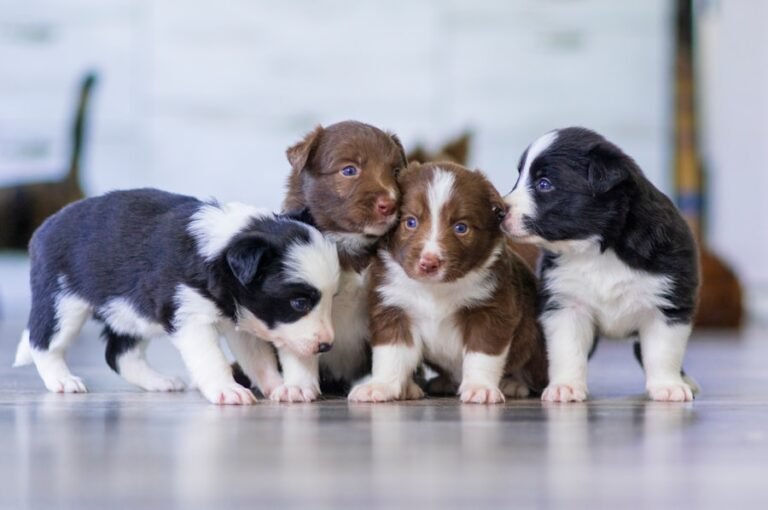Border Collie Puppy Training 101: A Comprehensive Beginner’s Guide
Border Collie Puppy Training 101: A Comprehensive Beginner’s Guide
Border Collie Puppy Training Introduction
Welcome to the world of Border Collie puppy training! If you’ve recently welcomed a furry bundle of energy into your home, congratulations on embarking upon an exciting and rewarding journey. The Border Collie breed is known for its intelligence, athleticism, and eagerness to please, making them highly trainable companions. However, like any new pup parent, you may be wondering where to start when it comes to training your Border Collie puppy.
In this comprehensive beginner’s guide, we’ll walk you through everything you need to know about raising a well-behaved and happy Border Collie. From understanding their unique temperament to addressing behavioral challenges and teaching advanced commands – we’ve got you covered! So grab a treat (you might want one for yourself too!), get ready for some pawsitive learning experiences, and let’s dive into the world of Border Collie puppy training together. Your four-legged friend will thank you for it!
Understanding Border Collie Puppies
Border Collies are widely known for their intelligence and high energy levels. As puppies, they exhibit a curious and eager-to-learn nature that requires proper understanding from their owners. These adorable bundles of fur are highly trainable, but it’s important to remember that each puppy is unique.
When it comes to Border Collie puppy training, one must recognize their instinctual herding behavior. These pups have an innate drive to chase and control movement, which can sometimes result in nipping or herding other animals or even children. This behavior should be redirected through positive training methods rather than punished.
Additionally, border collie puppies thrive on mental stimulation. They require plenty of exercise and activities that challenge their minds in order to prevent boredom and destructive behaviors. Puzzle toys, interactive games, and obedience training sessions can provide the necessary mental stimulation for these intelligent pups.
It’s also crucial to establish clear boundaries with your border collie puppy early Border Collie puppy training. Consistent rules and expectations will help them understand what is acceptable behavior within your household. Positive reinforcement techniques such as treats, praise, and playtime are effective ways to encourage desired behaviors while discouraging unwanted ones.
As you embark on the journey of Border Collie puppy training, patience is key. It takes time for them to learn new commands and develop good habits. Remember that consistency is vital throughout the training process; reinforce positive behaviors consistently while redirecting or ignoring negative ones.
By gaining a deeper understanding of your border collie puppy’s instincts, needs, and capabilities as well as implementing consistent training methods with patience and positivity at its core – you’ll set the stage for a happy life together filled with mutual trust and respect!
Border Collie Puppy Training: Setting Training Goals
When it comes to Border Collie puppy training, setting clear and achievable goals is essential. By having a roadmap for what you want to accomplish with your pup, you can stay focused and track their progress along the way.
Consider what specific behaviors or commands you want your Border Collie to learn. This could include basic obedience commands like sit, stay, and come, as well as more advanced tricks such as roll over or fetch. Remember that puppies have shorter attention spans, so start with simple tasks before moving on to more complex ones.
Next, establish a timeline for achieving these goals. Be realistic in your expectations and understand that every puppy learns at their own pace. It’s important to break down larger tasks into smaller steps to make the training process more manageable for both you and your furry friend.
Additionally, think about any specific challenges or problem areas you may need to address during Border Collie puppy training. For example, if your Border Collie tends to pull on the leash during walks, one of your goals might be teaching them loose leash walking techniques.
Keep in mind that Border Collie puppy training should be fun for both you and your pup. Incorporate plenty of positive reinforcement through treats, praise, and playtime rewards when they successfully complete a task or exhibit good behavior.
By setting clear training goals tailored specifically to your Border Collie puppy’s needs and abilities while maintaining an enjoyable atmosphere throughout the process – success is within reach! Keep reading our blog series for helpful tips on creating a positive training environment!
Creating a Positive Training Environment
When it comes to Border Collie puppy training, creating a positive environment is crucial for their success. By establishing a space that promotes learning and growth, you can set the stage for effective training sessions.
First and foremost, ensure that your Border Collie puppy training area is free from distractions. This means removing any toys or objects that may tempt your pup’s attention away from the task at hand. A quiet room or fenced-in yard works best for minimizing outside disturbances.
Next, make sure you have plenty of high-value treats on hand. These tasty rewards will motivate your border collie puppy to perform desired behaviors and reinforce their understanding of commands. Treats should be small, soft, and easy to chew so they can quickly consume them during training sessions.
Additionally, use positive reinforcement techniques such as praise and affection throughout the training process. Border collies thrive on praise from their owners and respond well when they feel loved and appreciated. Remember to always reward good behavior immediately after it happens to reinforce the connection between the action and the reward.
Consistency is key in creating a positive training environment. Use clear verbal cues or hand signals consistently so your puppy understands what you are asking of them. Stick with one method for each command until they have mastered it before introducing variations.
Keep in mind that patience is essential when working with border collie puppies. They are intelligent dogs but may take some time to grasp new concepts fully. Stay calm, avoid frustration or anger, and remember that every small step forward is progress towards successful training.
By implementing these strategies into your training routine consistently, you will create an environment where both you and your border collie puppy can thrive together! So get ready for lots of tail wags as you embark on this rewarding journey of teaching new skills!
Basic Obedience Border Collie Puppy Training
Border Collie puppy training in basic obedience is an essential foundation for their development and future behavior. Start by teaching simple commands such as “sit,” “stay,” and “come.” Begin with short training sessions to keep your puppy engaged and focused.
Using positive reinforcement techniques, reward your puppy with treats, praise, or playtime when they successfully follow a command. Consistency is key; repeat the commands often until they become second nature to your pup.
Keep training sessions fun and interactive to prevent boredom or frustration. Incorporate games like fetch or hide-and-seek into the training routine to make it more enjoyable for both you and your furry friend.
Remember that puppies have short attention spans, so keep each session brief but frequent throughout the day. Gradually increase the difficulty of commands as your puppy becomes more proficient.
Never use punishment-based methods during training as this can damage trust between you and your pup. Instead, focus on rewarding good behavior and redirecting unwanted behaviors using positive reinforcement.
Always be patient with your Border Collie puppy during their Border Collie puppy training. Each dog learns at its own pace, so avoid comparing them to other puppies or expecting instant results. Celebrate small victories along the way!
By laying a solid foundation in basic obedience training early on, you are setting up your Border Collie puppy for success in their future training endeavors. Remember to always provide love, patience, consistency, and positive reinforcement throughout this journey together!
House Training and Crate Training
House training and crate training are essential components of your Border Collie puppy training journey. These techniques not only promote good behavior but also create a safe and comfortable environment for your furry friend.
When it comes to house training, consistency is key. Establish a routine by taking your puppy outside to the designated potty area at regular intervals throughout the day. Praise and reward them when they eliminate in the correct spot. Be patient as accidents will happen, especially during the early stages of training.
Crate training can be extremely beneficial for both you and your pup. A crate serves as their den, providing them with a sense of security. Begin by gradually introducing your puppy to the crate, making it an inviting space with cozy bedding and toys. Use positive reinforcement such as treats or praise when they enter willingly.
Ensure that the crate is appropriately sized – not too big or too small – allowing enough room for your pup to stand up, turn around, and lie down comfortably. Crates should never be used as punishment; they should be viewed as a safe haven where puppies can relax.
Remember that house training takes time and patience; every dog learns at their own pace. Stay consistent in implementing these methods, provide plenty of positive reinforcement, and before long you’ll have a well-trained Border Collie who understands where to go potty and feels secure in their crate!
Socializing Your Border Collie Puppy
Socializing your Border Collie puppy is a crucial aspect of their overall Border Collie puppy training and development. It helps them become well-rounded, confident, and adaptable dogs in various social situations. By exposing your pup to different people, animals, environments, and experiences at an early age, you can foster positive interactions and prevent potential behavioral issues down the line.
Start by introducing your Border Collie puppy to family members, friends, and neighbors in a controlled environment. Encourage gentle petting and provide treats as rewards for good behavior during these encounters. Gradually expose them to more strangers at parks or on walks while ensuring their safety with a leash.
Additionally, organize playdates with other friendly dogs to teach appropriate social behaviors like sharing toys or taking turns. Supervision is essential during these interactions to avoid any aggressive or fearful reactions from either party.
Exposing your Border Collie puppy to different environments such as busy streets, public transportation systems, or outdoor cafes will help them develop resilience and adaptability. Provide positive reinforcement when they remain calm amidst distractions.
Remember that every dog is unique in their temperament and response to new experiences. Be patient with your Border Collie puppy’s progress during socialization efforts while offering constant support through praise and rewards.
Addressing Behavioral Challenges
Border Collie puppies are known for their high energy levels and intelligence, but sometimes these traits can lead to behavioral challenges. It’s important to address these issues early on to ensure a well-behaved and happy pup.
One common challenge is excessive barking. Border Collies are known to be vocal dogs, but if your puppy’s barking becomes excessive or disruptive, it’s time to intervene. Start by identifying the triggers for the barking and work on redirecting their attention using positive reinforcement techniques.
Another challenge you may encounter is destructive chewing. Border Collies have strong jaws and love to explore with their mouths. To prevent destructive chewing, provide plenty of appropriate chew toys and supervise your puppy closely when they’re out of the crate or confined area.
Separation anxiety can also be a concern for Border Collie puppies. These dogs form strong bonds with their owners and may become anxious when left alone. Gradually acclimate your pup to being alone by starting with short periods of separation and gradually increasing the duration over time.
Leash pulling is a behavioral challenge that many Border Collie owners face. These energetic pups often have an intense desire to investigate everything around them, leading them to pull on the leash during walks. Consistent Border Collie puppy training using positive reinforcement will help teach them proper leash manners.
Remember, addressing behavioral challenges takes time and patience. Seek professional guidance if needed, as some behaviors may require more specialized training techniques specific to your individual dog’s needs.
Teaching Advanced Commands and Tricks
Teaching advanced commands and tricks to your border collie puppy can be a fun and rewarding experience for both you and your furry friend. Once your pup has mastered the basics of obedience Border Collie puppy training, it’s time to take their training to the next level!
One popular advanced command is “fetch.” This not only provides mental stimulation but also helps with physical exercise. Start by introducing a toy or ball that your puppy loves, then toss it a short distance away while giving the command “fetch.” When they bring it back, reward them with praise and a treat.
Another impressive trick you can teach your border collie is “spin.” To do this, hold a treat in front of their nose and guide them in circles while saying the command “spin.” Reward them when they complete the rotation. With practice, they will learn to spin on command without needing guidance.
For more challenging commands like “roll over” or “play dead,” break down the actions into smaller steps. For example, teaching roll over could involve first getting your puppy comfortable lying down on cue before progressing to rolling onto one side and eventually completing the full roll.
Remember that consistency is key when teaching advanced commands and tricks. Practice these new skills regularly in short bursts rather than long sessions. Always use positive reinforcement techniques such as treats, praises, and playtime rewards.
Keep in mind that every dog learns at their own pace. Be patient with your border collie puppy as they may need more time to master certain commands compared to others. Stay positive throughout the training process – dogs respond best when they see their owners excited about their progress!
Incorporating advanced commands into daily routines can help keep your border collie mentally stimulated while deepening the bond between you both. It’s amazing what these intelligent pups are capable of learning! So get started today and have fun exploring all the potential tricks you can teach your talented border collie companion.
Training Tools and Equipment for Border Collie Puppies
When it comes to Border Collie puppy training, having the right tools and equipment can make a world of difference. Here are some essential items that will assist you in shaping your pup into a well-behaved companion.
1. Leashes and Harnesses: A sturdy leash is crucial for controlling your energetic Border Collie during walks or training sessions. Opt for a harness instead of a collar, as it provides better support without putting pressure on their delicate necks.
2. Treats and Rewards: Positive reinforcement is key to successful training, so stock up on tasty treats that motivate your pup. Choose small, bite-sized rewards that are easy to handle during training sessions.
3. Clicker: Many trainers swear by clicker training as an effective way to communicate with dogs. The distinct sound of the clicker marks desired behaviors and helps reinforce positive associations in your dog’s mind.
4. Toys: Keeping your Border Collie entertained is vital, especially when they’re not actively engaged in training exercises. Interactive toys provide mental stimulation and prevent boredom-induced mischief.
5. Training Mat or Bed: Having a designated spot for your puppy to relax during breaks or downtime promotes good behavior while teaching them boundaries within the home.
Remember, each dog may respond differently to different tools, so be flexible in trying out various options until you find what works best for both you and your furry friend!
Consistency and Patience: Key Elements of Successful Training
Consistency and patience are two key elements that can make or break your Border Collie puppy training journey. When it comes to training, consistency means setting the same rules and expectations every time, while patience involves understanding that progress takes time.
Consistency is crucial because dogs thrive on routine and structure. By providing clear boundaries and consistently reinforcing desired behaviors, you’re helping your Border Collie puppy understand what is expected of them. This will help prevent confusion and ensure that they learn the correct behaviors more quickly.
Patience is equally important during your Border Collie puppy training because each puppy learns at their own pace. Some may pick up commands quickly, while others need more time to grasp a concept. It’s essential to remain patient throughout the training process, avoiding frustration or impatience when your pup doesn’t immediately respond as desired.
Remember that training should be a positive experience for both you and your furry friend! Celebrate small victories along the way and use positive reinforcement techniques such as treats, praise, and playtime to motivate your Border Collie puppy.
Additionally, keep in mind that effective training requires repetition. Dogs learn through repetition, so consistent practice of commands and exercises will reinforce their understanding over time.
It’s also important to note that consistency goes beyond just training sessions; it extends to all aspects of your pup’s life. Consistent routines for feeding times, walks, playtimes, and sleep schedules provide stability for your Border Collie puppy which can aid in their overall behavior development.
Always remember not to rush or overwhelm your furry companion with too much information at once. Break down complex tasks into smaller steps so they can build confidence gradually.
By being consistent in both rules and expectations while maintaining patience throughout the process – you’ll set yourself up for success in border collie puppy training! So grab those treats (and plenty of them) – let the fun begin!
Maintaining a Lifelong Training Routine
Consistency is key when it comes to Border Collie puppy training. Once you have successfully taught them basic obedience commands and tricks, it’s important to continue reinforcing these behaviors throughout their life. By establishing a lifelong training routine, you can ensure that your pup remains well-behaved and obedient.
One way to maintain a consistent training routine is by incorporating daily practice sessions into your dog’s schedule. This doesn’t mean spending hours on end working with them, but rather dedicating short bursts of time each day for reinforcement and new learning opportunities.
Another important aspect of maintaining a lifelong training routine is keeping things interesting for your Border Collie. Dogs thrive on mental stimulation, so try introducing new challenges or advanced commands as they progress in their abilities. This will help prevent boredom and keep their minds sharp.
It’s also crucial to adapt your training techniques as your Border Collie grows older. As they mature, their needs may change, so be open to adjusting the methods you use accordingly. For example, if you notice any behavioral issues arising as they enter adolescence or adulthood, seek professional advice or attend specialized classes.
Don’t forget about the power of positive reinforcement! Rewarding good behavior with treats, praise, or playtime will not only motivate your dog but also strengthen the bond between you both.
By consistently practicing Border Collie puppy training exercises and adapting as needed over time while using positive reinforcement methods,you can establish a lifelong habit of learning and obedience for your beloved Border Collie companion.
Conclusion
Border Collie puppy training requires patience, dedication, and consistency. By understanding the unique characteristics of this breed and setting clear training goals, you can establish a strong foundation for your puppy’s development. Creating a positive training environment is essential to promote learning and build trust between you and your furry companion.
Throughout the process, basic obedience training will help instill good behavior and manners in your Border Collie. Teaching commands such as sit, stay, and come will ensure that they are well-behaved both at home and in public settings. House training and crate training are also important aspects to consider to maintain cleanliness within your living space.
Socializing your Border Collie puppy from an early age is crucial for their overall development. Exposing them to different environments, people, animals, sounds, and experiences will make them more confident and less prone to behavioral issues later on.
If you encounter any behavioral challenges during the training process such as jumping or excessive barking, it’s important to address them promptly using positive reinforcement techniques rather than resorting to punishment.
As your Border Collie progresses in their training journey, you can begin teaching them advanced commands like “fetch” or fun tricks like “roll over.” These mental challenges not only keep them engaged but also strengthen the bond between you two.
When it comes to choosing tools for training purposes such as leashes or clickers – always opt for high-quality products that prioritize comfort for both you and your pup.
Remember: consistency is key! Training should be incorporated into daily routines with short sessions spread throughout the day rather than overwhelming your puppy with extended periods of instruction.
Lastly but most importantly – have fun! Training should be an enjoyable experience for both you and your Border Collie puppy. Celebrate small victories along the way while remaining patient with setbacks or difficulties that may arise during this process.
With these tips in mind alongside love , care ,and commitment; You’ll be well on your way to raising a happy, obedient, and well-trained Border Coll
FAQ’s
Q: How long does it take to train a Border Collie puppy?
A: The time required to train a Border Collie puppy can vary depending on various factors, including the individual dog’s temperament and your consistency in training. Generally, it takes several months of consistent training to establish basic obedience commands. However, ongoing training throughout their lives is necessary for continued success.
Q: Can I train my Border Collie puppy without professional help?
A: Yes, you can certainly train your Border Collie puppy without professional help. Many owners successfully train their dogs using positive reinforcement techniques and resources available online or through books. However, if you encounter any specific challenges or behavioral issues that you are unable to resolve on your own, seeking guidance from a professional trainer or behaviorist may be beneficial.
Q: What is the best age to start training a Border Collie puppy?
A: It is recommended to start training your Border Collie puppy as early as possible – ideally around 8-10 weeks old. Puppies have an increased capacity for learning during this critical period of development. By starting early, you can lay the foundation for good behavior and obedience that will benefit them throughout their lives.
Q: Are there any specific health concerns I should consider while training my Border Collie puppy?
A: While training your Border Collie puppy, it’s important to prioritize their health and safety. Be mindful of not overexerting them physically during intense exercise sessions until they are fully grown since excessive strain at a young age could potentially harm their developing joints and bones. Additionally, ensure they receive proper nutrition and regular veterinary care for overall well-being.
Remember that every dog is unique and may require different approaches when it comes to training. It’s essential to stay patient, consistent with your methods, and adapt them as needed based on your pup’s progress and responses.
By investing time in understanding the needs of your Border Collie puppy and following the training guidelines provided in this comprehensive beginner’s guide, you’ll be on the right track to ensure a healthy and happy partnership between you and your pup.








